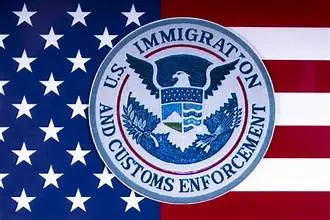Thomas J. Hughes, a 29-year-old investment banker allegedly took his life by jumping from a luxury apartment building at 1 West Street in Manhattan last week. Per usual, the NYPD immediately declared it a suicide. Strangely, serious investigations never took place and similar deaths have occurred within the past 18 months all declared suicides.
Wall Street on Parade has been following a lead, alleging insurance fraud. They may be barking up the wrong tree with regard to motive, but what they are barking about is very strange. I suspect that, like myself, they may have stumbled upon info with respect to market manipulations that would uncover even more wrongdoing and billions of dollars in fines.
Wall Street on Parade’s barking may not be the motive for the deaths, but given the strange death of Senior Vice President of MassMutual, Melissa Millan, 54, who they point out was in possession of the very type of peer review records they were seeking, there may be another motive. As Wall Street on Parade reported about Millan’s death, “That meant Millan was among a limited group outside of Federal regulators who was in a position to have broad data on the death benefit claims being submitted by multiple banks and able to run studies to detect if anomalies were emerging.” Millan was brutally stabbed to death while jogging in Simsbury, Connecticut. The connection may not mean that she was murdered to cover-up insurance payments, but rather that she may have suspected murder and thus insurance fraud so her murder might be required to prevent an investigation of the Wall Street suicide contagion.
During my recent European tour, people continually asked, “Why are you still alive?” True, there was an attempt on my life and I spent 3 days in a coma, but I survived, no doubt to their dismay. I doubt many people would buy a claim I committed suicide after the Supreme Court compelled them to end the contempt by agreeing to hear the case. So in my case, they will have to fake an accident or cause me to be in the wrong place at the right time.
Yet at the very beginning of my case, someone placed a bullet in my mailbox as a warning before the contempt began. That was even discussed in court and the bullet was turned over as evidence. In my case, I had tapes documenting every market manipulation of the “club” which included who they were. They were seized from my lawyers under threat of imprisoning them and then the receiver demanding those tapes was given a job inside Goldman Sachs as a board member yet continued to work as the court receiver from the board of Goldman Sachs never resigning from the court..
So what is the common link? Some may be stress and being pushed too far as the Goldman Sachs analyst. But I suspect it is not murder for insurance, but suicide to cover up the people they fear will be the next Snowden of Wall Street. I also believe that Robert Maxwell, the flamboyant billionaire British publisher, who allegedly drowned after falling off his yacht in the Canary Islands near the northwest coast of Africa, was part of the “club”. Maxwell’s last words in communication were on November 5, 1991. Note the date for the Salomon Brothers scandal manipulating the U.S. Treasury Auctions broke August 18, 1991.
Maxwell’s death triggered the collapse of his publishing empire as banks called in loans. Why would they call in loans on a major company unless they knew something was not right? Maxwell’s sons briefly struggled to keep the business together, but failed as news emerged that Maxwell had stolen hundreds of millions of pounds from his own companies’ pension funds. That was not to support a lifestyle, that was punting money. The Maxwell companies applied for bankruptcy protection in 1992. Those funds, I believe, were used as part of the “club” and were lost. Had Maxwell survived and been charged, he may have given up everyone else in the “club”.
 Even in the murder of Edmond Safra, they blamed the male nurse, Ted Maher, and threw him in prison. H was later released saying he never received a fair trial that the prosecutor and judge colluded against him and never said who killed Safra. Maher was imprisoned in Monaco for over two years before his trial began, resulting in a considerable amount of controversy and speculation surrounding the case. Days before Safra’s death, he finalized the sale of his Republic National Bank to HSBC Holdings plc indemnifying them for $1 billion to compensate the money stolen from our accounts to prevent lawsuits against Republic by its shareholders. Dominic Dunn wrote in his Death in Monaco on that affair:
Even in the murder of Edmond Safra, they blamed the male nurse, Ted Maher, and threw him in prison. H was later released saying he never received a fair trial that the prosecutor and judge colluded against him and never said who killed Safra. Maher was imprisoned in Monaco for over two years before his trial began, resulting in a considerable amount of controversy and speculation surrounding the case. Days before Safra’s death, he finalized the sale of his Republic National Bank to HSBC Holdings plc indemnifying them for $1 billion to compensate the money stolen from our accounts to prevent lawsuits against Republic by its shareholders. Dominic Dunn wrote in his Death in Monaco on that affair:
“Everyone thought the story was more complicated than the official version—which was that the male nurse did it. “Sure, sure, he’ll do four years, and there’ll be $4 million waiting for him,” one man said to me. His wife didn’t agree with him. “You wait. He’ll conveniently die in prison in a few years of pneumonia or something.” A more conservative friend of the Safras said to me in Paris, “Among friends, we avoid talking about it. It might not be what it is.”
There is a very dark and sinister cloud that overhangs this whole mess. It is unlikely that the government will ever investigate, for that would be way too dirty to air publicly. It just seems death, money, and Wall Street are always behind a curtain and the truth never surfaces.












